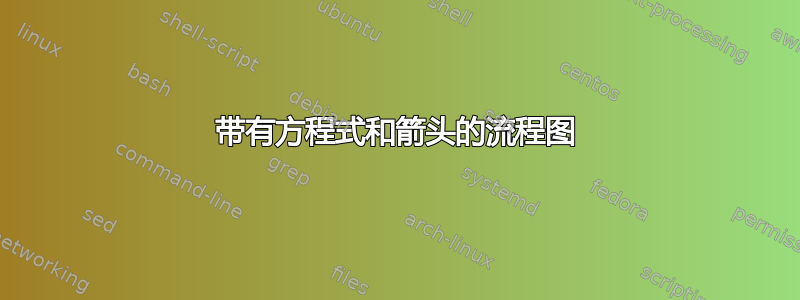
答案1
欢迎来到 TeX.SE!这个起点够了吗?(我的回答基于这个答案。编辑:在代码中添加了解释。这不会让您免于浏览 pgfmanual,但可能会让您有所了解。第二次编辑:按照 J Leon V. 的评论将文本居中对齐,并做了一些其他外观上的改变。
\documentclass[tikz,border=3.14mm]{standalone}
% these are two of the main libraries for relative positioning (apart from matrix)
\usetikzlibrary{chains, positioning}
\begin{document}
\begin{tikzpicture}[
node distance = 2cm,
start chain = main going right,
box/.style = {draw, minimum height=7mm,text width=8mm,align=center,on chain,
join=by {-latex,thick}}
]
% put three nodes on a chain
\node (n1) [box] at (0,0) {$\mathbf{x}_{t-1}$};
\node (n2) [box] {$\mathbf{x}_{t}$};
\node (n3) [box] {$\mathbf{x}_{t+1}$};
% add two empty nodes left and right of the chain using positioning
\node[minimum height=7mm,left=1.2cm of n1] (n0){};
\node[minimum height=7mm,right=1.2cm of n3] (n4){};
% draw arrows "by hand"
\draw[thick,latex-] (n1) -- (n0);
\draw[thick,latex-] (n4) -- (n3);
% draw arrows in a loop
\foreach \X[evaluate=\X as \Y using {int(\X-2)},evaluate=\Y as \SignY
using {sign(\Y)},evaluate=\X as \LastX using {int(\X-1)}] in {1,2,3}
{\ifnum\SignY=0
\def\myt{t}
\else
\ifnum\SignY=1
\def\myt{t+\Y}
\else
\def\myt{t\Y}
\fi
\fi
\draw[thick,-latex] (n\X) -- ++(0,1) node[above](E\X){$\mathcal{E}_{\myt}$};
\draw[latex-,shorten <=2pt] ([xshift=-2pt]n\X.north east) -- ++(0,0.5) node[midway,right,green!50!black]{$
\frac{\partial\mathcal{E}_{\myt}}{\partial\mathbf{x}_{\myt}}$};
\draw[thick,latex-] (n\X) -- ++(0,-1) node[below]{$u_{\myt}$};
}
% draw arrows by hand again
\draw[-latex,shorten >=4pt,shorten <=4pt] ([yshift=4pt]n1.south west)
-- ([yshift=4pt]n0.south east)
node[midway,below,text=red!50!black]{$\frac{\partial \mathbf{x}_{t-1}}{\partial
\mathbf{x}_{t-2}}$};
\draw[-latex,shorten >=4pt,shorten <=4pt] ([yshift=4pt]n2.south west)
-- ([yshift=4pt]n1.south east)
node[midway,below,text=red!50!black]{$\frac{\partial \mathbf{x}_{t}}{\partial
\mathbf{x}_{t-1}}$};
\draw[-latex,shorten >=4pt,shorten <=4pt] ([yshift=4pt]n3.south west)
-- ([yshift=4pt]n2.south east)
node[midway,below,text=red!50!black]{$\frac{\partial \mathbf{x}_{t+1}}{\partial
\mathbf{x}_{t}}$};
\draw[-latex,shorten >=4pt,shorten <=4pt] ([yshift=4pt]n4.south west)
-- ([yshift=4pt]n3.south east)
node[midway,below,text=red!50!black]{$\frac{\partial \mathbf{x}_{t+2}}{\partial
\mathbf{x}_{t+1}}$};
\end{tikzpicture}
\end{document}




